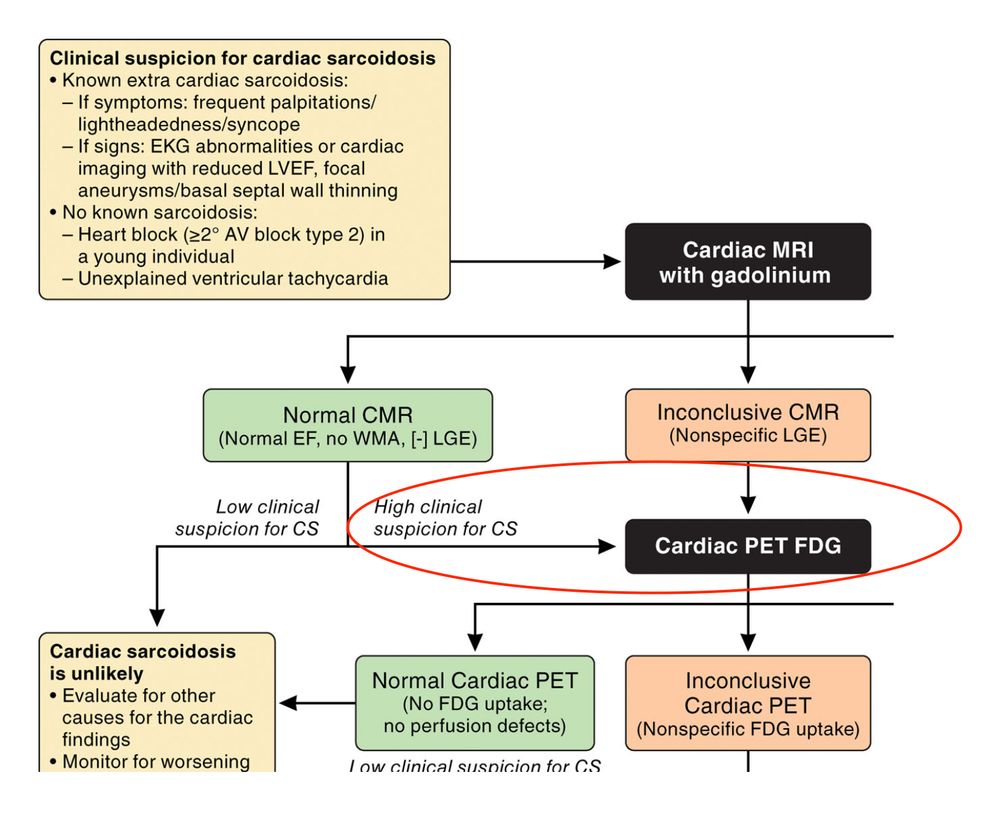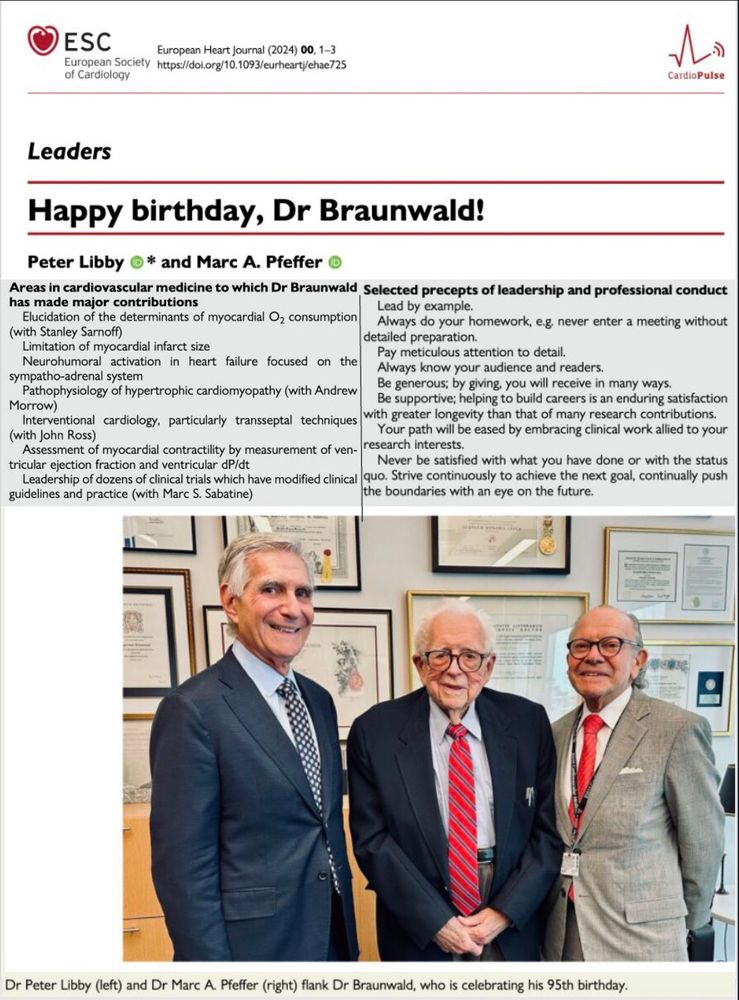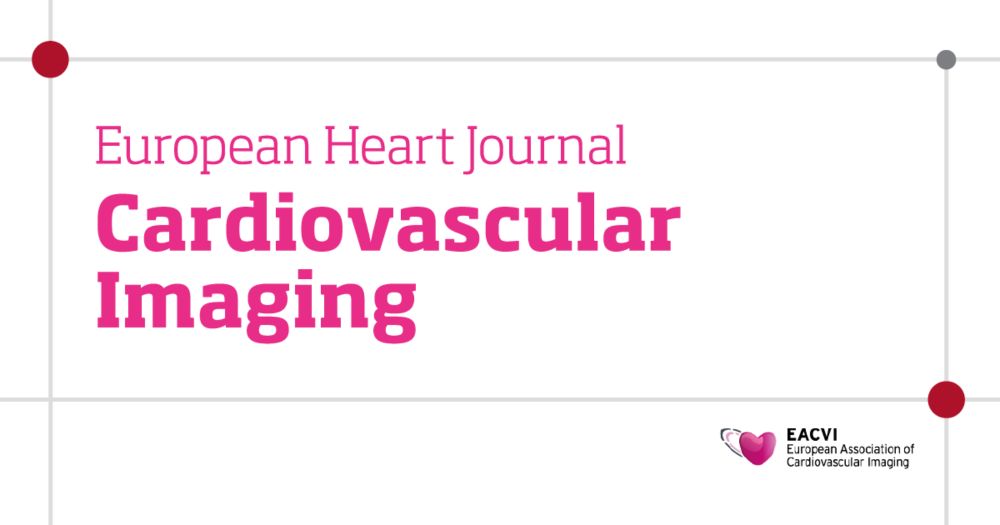Thank you, @toddneale.bsky.social, for your excellent reporting on our EHJ paper!
@tctmd.bsky.social @escardio.bsky.social @paragbawaskar.bsky.social
11.06.2025 22:12 — 👍 6 🔁 1 💬 3 📌 0
Query sarcoid, normal #WhyCMR, so then should we do FDG-PET? Not much benefit.
23.03.2025 05:29 — 👍 5 🔁 2 💬 0 📌 0

In patients with suspected cardiac sarcoidosis, cardiac FDG-PET is recommended after a normal CMR if there is a high clinical suspicion. What are the data supporting this recommendation? #CardioSky #MedSky #Sarcoidosis
21.03.2025 23:39 — 👍 10 🔁 6 💬 2 📌 1

In honor of Dr. Braunwald’s 95th birthday. The number of areas he has touched in cardiology is staggering, and number of cardiovascular professionals is unquantifiable. @harvardmed.bsky.social
23.11.2024 18:26 — 👍 36 🔁 10 💬 0 📌 0


Amazing achievement by rising star and post-doc in my lab @paragbawaskar.bsky.social, winner of the prestigious 2024 Melvin Judkins Early Career Investigator Award at #AHA24!! Congratulations!!!
@ahascience.bsky.social
17.11.2024 15:46 — 👍 15 🔁 4 💬 1 📌 0
It’s great that journals are coming over here, but what I have really missed after my departure from Twitter 2 years ago is this, the authors themselves presenting their works and discussing it with peers. #cardiosky #medsky #emimcc
13.11.2024 15:58 — 👍 31 🔁 7 💬 2 📌 0

Figure 2 from the paper. Incidence of embolism in left ventricular (LV) thrombus patients compared with matched non-LV thrombus patients. Kaplan-Meier curves demonstrate the cumulative incidence of the composite embolic end point in the LV thrombus (in red) and in the matched non-LV thrombus (in blue) groups. Note the significant difference in the cumulative incidence of embolic events between the 2 groups.
In 2019, we wrote a paper showing that patients with left ventricular thrombus have a long-term risk of embolism, extending to at least 8 years.
We were puzzled by the finding…
#CardioSky
www.ahajournals.org/doi/10.1161/...
12.11.2024 19:34 — 👍 25 🔁 17 💬 3 📌 4
Finally, many thanks to @cshenoy.bsky.social for his mentorship, our outstanding team for their contributions, and the editors and reviewers at Circulation for all their efforts to make our paper better!
11.11.2023 04:23 — 👍 2 🔁 1 💬 0 📌 0
Read our paper here –https://www.ahajournals.org/doi/abs/10.1161/CIRCULATIONAHA.123.067032
And if you will be at #AHA23, come visit the poster session on Monday, Nov 13, 10:00-11.30 am, Zone 2.
eppro01.ativ.me/src/EventPil...
11.11.2023 04:22 — 👍 3 🔁 1 💬 1 📌 0

An important trial related to this topic was just funded in the UK – Peter Swoboda at the University of Leeds is the PI of an RCT to identify the best initial test for newly diagnosed HF… we look forward to the results of CROSS-HF in a few years.
11.11.2023 04:22 — 👍 2 🔁 1 💬 1 📌 0
And if NICM and dualCM do influence outcomes, the next trial should investigate whether the routine use of CMR to identify the cause of cardiomyopathy improves the selection of patients for coronary revascularization, and overall long-term outcomes.
11.11.2023 04:22 — 👍 2 🔁 1 💬 1 📌 0


We need to investigate whether NICM or dualCM in patients with CAD influences outcomes after coronary revascularization.
An ancillary study of the STICH3C trial by Mario Gaudino and Jonathan Weinsaft at Cornell will give us some answers in about 5 years.
11.11.2023 04:21 — 👍 2 🔁 1 💬 1 📌 0
So what? Patients with CAD+NICM or dualCM should be treated with a statin, aspirin, and guideline-directed HF therapy the same as those with CAD+ICM.
But do patients with CAD+ NICM or dualCM benefit from coronary revascularization in the same manner as those with CAD+ICM?
11.11.2023 04:21 — 👍 2 🔁 1 💬 1 📌 0
Prior studies have found better outcomes for NICM vs. ICM. What explains worse outcomes for NICM in our study?
We can only speculate, but it may be because patients in our study had 2-3 diseases – CAD+NICM… or CAD+ICM+NICM.
Prior studies compared NICM without CAD to ICM+CAD.
11.11.2023 04:21 — 👍 2 🔁 1 💬 1 📌 0


And we looked at their long-term outcomes.
Patients with CAD+NICM or dualCM had a greater risk of all-cause death or heart failure hospitalization, all-cause death, and heart failure hospitalization compared with CAD+ICM.
The risk of CV death was not different.
11.11.2023 04:20 — 👍 2 🔁 1 💬 1 📌 0

We found NICM or dualCM in 1 of every 6 patients with CAD.
CAD+NoCM - 18.2%
CAD+ICM - 64.8%
CAD+NICM - 9.3%
CAD+dualCM - 7.7%
The prevalence of CAD+NICM or dualCM was 16.9% or 1 in 6 patients with CAD.
11.11.2023 04:13 — 👍 2 🔁 1 💬 1 📌 0

We looked at their CMRs and coronary angiography data and classified them into one of:
1. No cardiomyopathy (CAD+NoCM) – normal LVEF and no LGE
2. Ischemic cardiomyopathy (CAD+ICM)
3. Non-ischemic cardiomyopathy (CAD+NICM)
4. Dual cardiomyopathy (CAD+dualCM) – both ICM and NICM
11.11.2023 04:13 — 👍 2 🔁 1 💬 1 📌 0

We did a large retrospective observational study of 3,023 patients with obstructive CAD who had CMR for any clinical indication at our health system.
11.11.2023 04:12 — 👍 2 🔁 1 💬 1 📌 0
So how often do patients with CAD have NICM or dual (both ICM and NICM) cardiomyopathy?
How do these patients do compared to patients with ICM?
We tried to answer these questions.
11.11.2023 04:12 — 👍 2 🔁 1 💬 1 📌 0

There has been interest in this topic of late because trials of coronary revascularization other than STICHES have not shown revascularization to be beneficial.
11.11.2023 04:11 — 👍 2 🔁 1 💬 1 📌 0


Currently, we determine the cause of cardiomyopathy based on coronary angiography findings… CAD=ICM; No CAD=NICM
However, pathology and small CMR studies have shown that
NICM can occur with “bystander” CAD
ICM can occur without CAD
Both ICM and NICM can occur together
11.11.2023 04:10 — 👍 3 🔁 1 💬 1 📌 0

Have you ever wondered whether your patient with CAD and cardiomyopathy truly has ischemic cardiomyopathy, or whether the CAD is a “bystander”?
You might be interested in our paper now out in Circulation
#simultaneouspublication
#AHA23
#cardiosky
#Medsky
#WhyCMR
11.11.2023 04:09 — 👍 11 🔁 4 💬 2 📌 2
Epidemiologist with an interest in causal inference methods at @universityofleeds.bsky.social.
Check out my Intro to Causal Inference Course: https://www.causal.training/
#Epidemiology, #EpiSky, #CausalInference, #CausalSky, #AcademicSky
#cardiologist #electrophysiologist #Epeeps #cardiosky
Assistant Professor at @ ltmgh cardiology and @ Seth GSMC and Kem hospital, Mumbai
Pediatric cardiologist, genetic scientist, specialist in channelopathies and cardiomyopathies | Duke School of Med | Duke Children’s | Director of Duke’s Pediatric Research Scholars
Lab: https://sites.duke.edu/landstromlab/
#MedSky #CardioSky #CardioGen
Postdoc, CarDS Lab, Yale School of Medicine.
MHS Candidate (Med Informatics), Yale School of Public Health.
MBBS, AIIMS, New Delhi (3107/2014).
Enjoy medicine, machine learning, magic.
Views mine.
NEJM AI, a new monthly journal from the publisher of @nejm.org, explores the cutting-edge applications of artificial intelligence and machine learning in clinical medicine. Online at ai.nejm.org.
Cardiologist, Associate Prof of medicine , Director echo lab MMI #LLUH, tweets=myopinion #ACCImaging #whyCMR #Echofirst #YesCCT #WomenCVhealth🧘♀️ 🌱 🇮🇳 🇺🇸
Improving cardiovascular health and advancing the field of CMR through advocacy, networking, research, and clinical excellence.
#CMR #WhyCMR #HeartMRI
Entrepreneur
Costplusdrugs.com
Cardiologist, Cardiovascular Imager, President of the EACVI
Welcome to the official Bluesky account for the New England Journal of Medicine!
Follow us for high-quality, peer-reviewed research and clinical content from the world’s leading medical journal and website (NEJM.org).
Professor of Cardiology at Keele University, UK
CV Epidemiology. Associate Editor: Circulation CV Interventions
Senior clinical editor TCTMD
BCIS National audit lead.
Hiking
The official Bluesky account for the International Society for Heart and Lung Transplantation (ISHLT). www.ishlt.org
Smidt Heart Institute at Cedars-Sinai
#1 in California for Cardiology, Heart & Vascular Surgery, ranked by US News & World Report
Multidisciplinary organization working to improve and expand heart failure care through collaboration, education, research, innovation, and advocacy. 🫀hfsa.org #CardioSky #heartfailure
Our journal - @jcardfail.bsky.social
The official scientific journal of @scainews.bsky.social.
SCAI promotes excellence in #InterventionalCardiology 🔗 scai.org
We fund vital research into heart diseases, stroke and vascular dementia, and their risk factors like diabetes.
Nuclear Cardiologist. Yale Cardiology Fellowship Program Director. Infiltrative Cardiomyopathy
Interventional Cardiologist, Cath Lab Director #CHIP #CTO #TAVR #PERT #imagefirst Sky Posts are personal views ≠medical advise AFMC-O2 उद्यमेनैव हि सिध्यन्ति



















